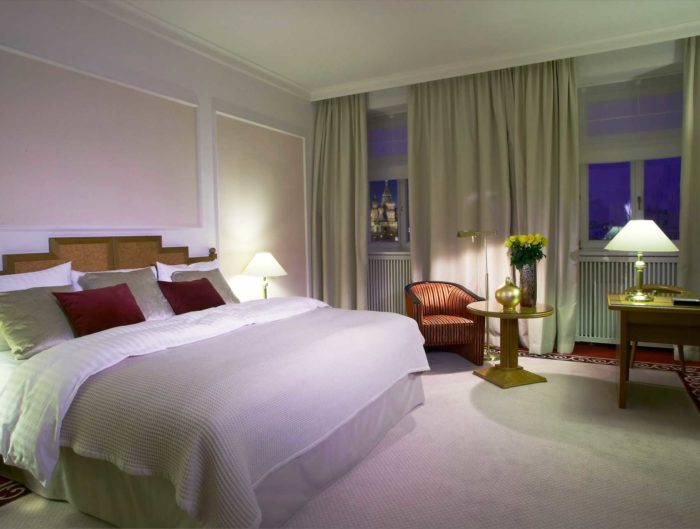Who sets the ratings for hotels and motels around the world?
There is no simple answer as it varies from country to country, but it is generally either a national motoring organization (as in Australia), national or local tourist authority, or local municipal council. They employ hotel inspectors, who then call on the properties, assess them, and then rate them as a 2, 3, 4 or 5-Star, although there are also half stars.
Once a hotel/motel achieves a rating, it often stays that way for years, with a visit from the inspector every few years. It can be a cosy relationship between the assessor and assessed, where the status quo is maintained. It is a brave new hotel inspector who comes into town, and decides to do a whole new rerating of each hotel, especially if marks some well known ones down!! He may be tarred and feathered and ridden out of town, especially if he downgrades the hotel owned by the local mayor, or business tycoon! And if he starts downgrading hotels of a large international chain, then he could be on the carpet at his head office and job on the line!
If you want examples of over rated hotels, then I can think of many both here and overseas and I am sure many of you can also. On the Gold Coast Queensland, there is a hotel part of a large international chain which opened as its 4-star brand 25 years ago – OK. Then a few years ago it was rebranded to their 5-star name. Nothing major changed in the hotel except the name, but it now calls itself a 5-star. But the rooms and service are just not up to 5-star standard. But which inspector is brave enough to tell them?
Then there is the so called 4-star on a European island where I stayed with a group a few years ago for a night. It was simply appalling. And not clean either. In the town there were three hotels, all owned by the same gentleman. This was the best of the three! I discovered that he was the local mayor, and also coach of the national football team. It would be a brave hotel inspector who marked his hotel to a 2.5-star which is what it is.
You can gauge from this, that I don’t have a lot of faith in the current system of hotel inspections by local/national authorities or motoring organizations. It is open to the application of subtle presssure on the assessor to ensure that he/she does not rock the boat. But upon reflection it may turn out to be better than the alternatives!
In recent times hotels and motels are now frequently assessing/rating themselves – especially in the large chains. So you may see on many hotel sites – SELF ASSESSED. So the hotel sets its own rating. Interesting to say the least. It is a worrying development that some of the world’s largest chains are now self assessing.
The other development is for travellers who stay at hotels to give their own ratings on sites like TripAdvisor, based on whatever criteria they think is important. This could be the new rating system run by TripAdvisor or Booking.com. That would be a worry! They already hold enormous power over many hotels.
It has been the case for decades, and still often so, that ground operators and tour operators (like me) will often set their own star rating for the hotels that they offer in their programs and brochures. There is nothing sinister about this – often we are not convinced by the rating given by the authority or hotel, and want to ensure that the customer is happy – and we receive no complaints. So, if I feel that a hotel is very acceptable but not really worth the allocated star rating it holds, then I will knock off half a star – or even a full star – but that is rare.
In the late 90s, the world’s largest international supplier of hotels to tour operators everywhere was GTA, with a head office in London with 1,000 staff and 100 hotel contractors/inspectors worldwide. Every one of the thousands of hotels they they offered was inspected, photos taken, and then rated by the inspector. If it met their criteria, then it was contracted with wholesale rates, which were then supplied together with the hotel information to tour operaors around the world. And GTA were not alone – Travco, Kuoni, JTB and many others were doing the same. And they were good at what they did.
Today that is all practically gone. There are still some companies, dealing mainly with groups, who inspect and grade all the hotels that they offer. And some tour operators like ourselves. But otherwise it is left to the local authorities, motoring oragnizations, hotels themselves, or TripAdvisor!
It is becoming more difficult for travellers to establish the true rating of a hotel, and all around the , including Australia, I can give you dozens of instances of so called 5–star hotels really only worth 4.5 stars, 4.5–stars only 4–stars and lots of 4–stars are really only good 3.5–stars.
So what criteria are used by the rating authorities to decide what star rating to apply to a particular hotel? The simple answer is anything and everything, ranging from size of room and bathroom, room facilities and quality of furnishings, to hotel facilities, room service, air–conditioning, number of restaurants, swimming pool, gym, and even friendliness of staff, and number of languages spoken. In addition, each rating organization has its own criteria, so one hotel can hold a number of ratings at the same time. It is a total minefield for consumers but don’t despair – help is at hand.
Firstly many of the criteria are subjective. It depends on someone’s opinion, and that is a major part of the problem. You can measure the size of a room, but how do you give a number to the quality of the furnishings, the ambience of the lobby, the staff attitudes to guests etc, without introducing someone’s opinion? The simple answer is that you can’t.
Twenty years ago in the UK they threw out the Star rating system and brought in a Crown system. It was a matter of ticking a whole lot of boxes according to what the hotel offered, and depending on how you scored, you were then given a Crown rating. It was a failure, and had a short life. Why? Because some 5 Crowns didn’t “feel” like 5 Crowns, 4 Crowns didn’t “feel” like 4 Crowns and so on. They just lacked something – style, atmosphere, character, not to mention the “quality” of all on offer. Some things you just can’t quantify, so it was back to the star system.
Even the United Nations World Travel Organization has weighed into solving the problem. It compared the 4 and 5–star categories of 36 countries, gathering the elements that were common and came up with some criteria for distinguishing them. I won’t bore you with all the details but they raise a smile.
The UNTWTO figures for 4 and 5-star hotels respectively included the following –
Hours of front office operation 19 and 24
Minimum room size 16 and 20.5 sq m
Number of power sockets per room 2.2 and 2.4
Number of languages spoken at front desk 2 and 2.5
In their summation they concluded that there were “more similarities than differences” between 4 and 5–star hotels. Furthermore, they concluded that “there is no worldwide standard for official hotel classification systems and there may well never be one”. And someone was paid good money to come up with that?
But don’t despair – stick with me and I’ll give you some good advice to ensure the happy holiday. If I explain how I arrive at my ratings, then it may help you when looking at hotels in brochures and online.
So what are my criteria for allocating my star ratings? You’ll have to wait for a later blog but it is coming very SOON.
Important footnote: The picture above shows a British hotel, outside which is standing Alex Polizzi, star of the marvellous TV show The Hotel Inspector. Alex has vast experience in hotels, and she is the perfect hotel inspector. Each week Alex takes us to a struggling problem hotel and assists the owner to get their act together. It is very enlightening and well worth watching.









Leave a reply